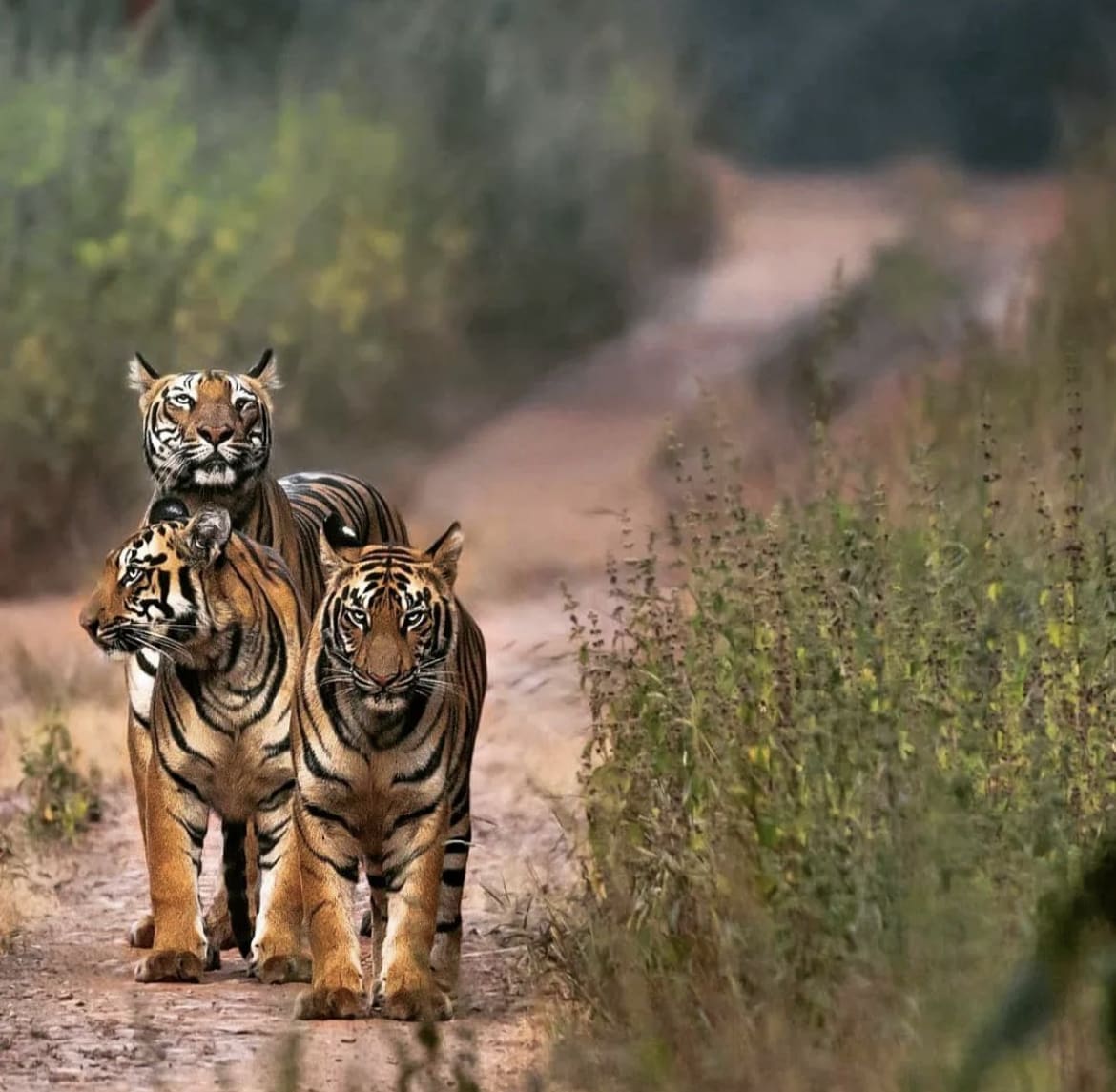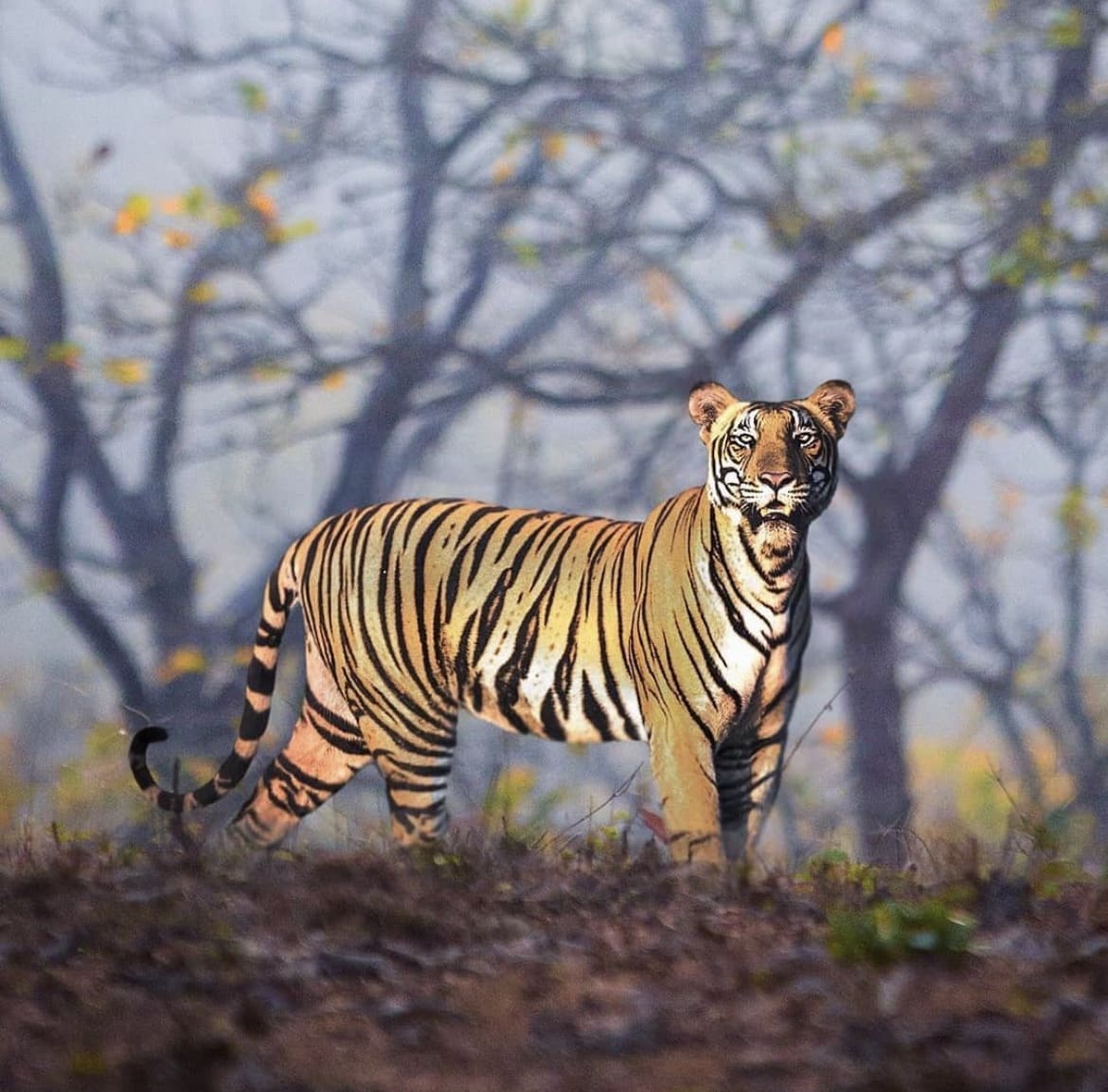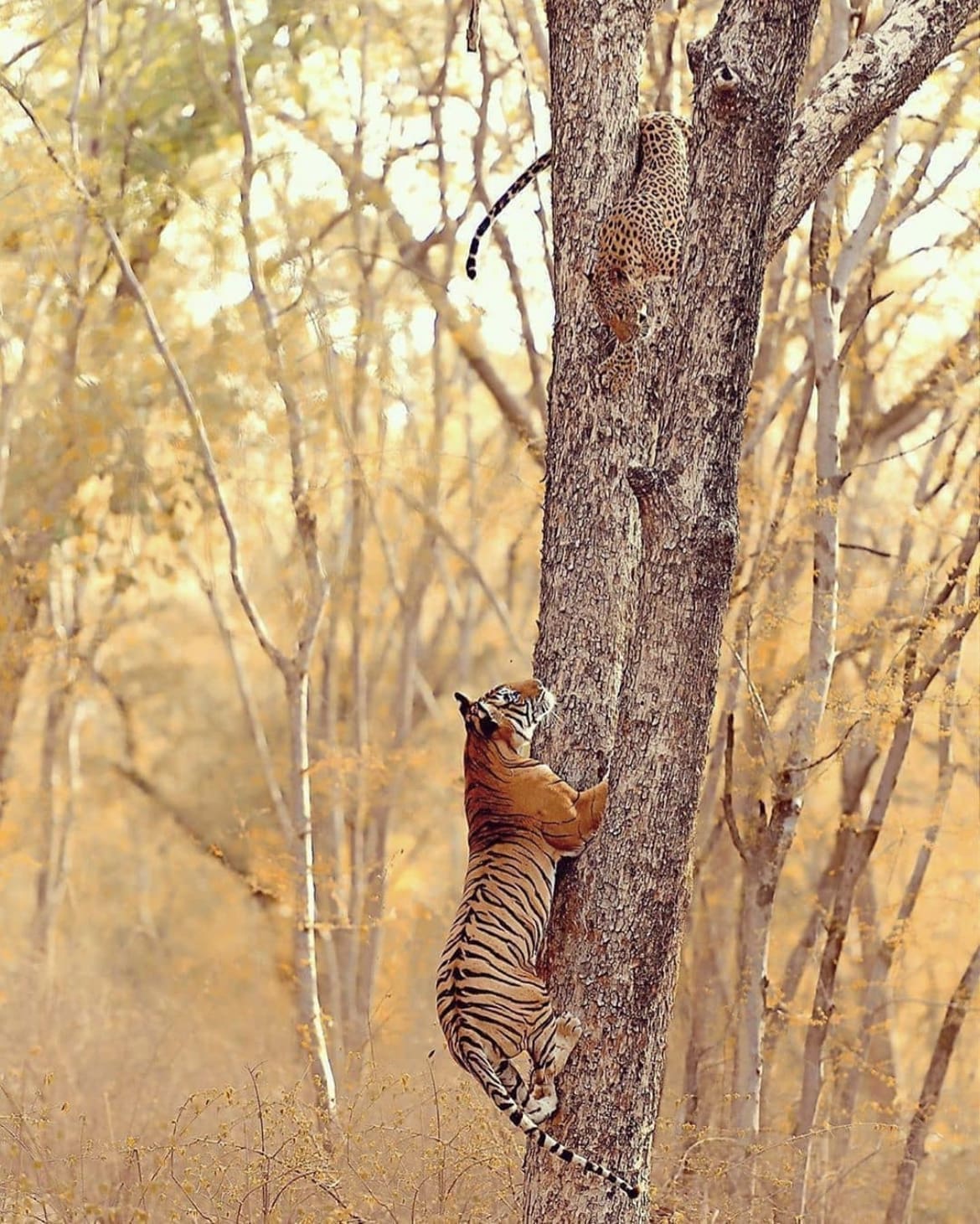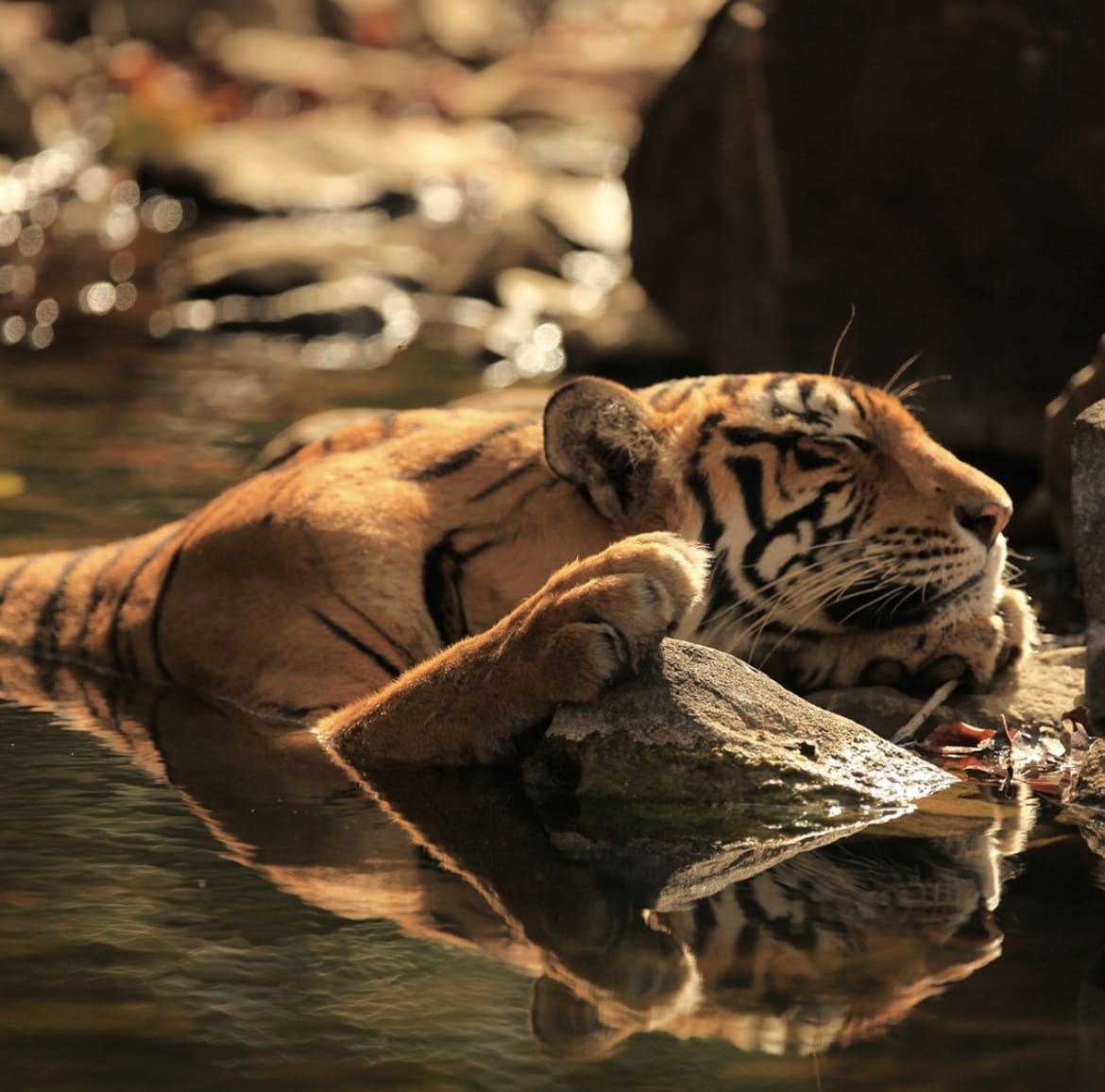One of the most awe-inspiring and captivating animal species on earth, the tiger has long been a symbol of myth and legend.
Native to Asia, Bengal tigers are the most widespread species of these majestic, striped cats.
What is the Bengal Tiger?
With an estimated population of around 2,500 individuals, the Bengal Tiger is the most widely spread species of tiger in existence today. Bengals are considered the national animal of India, Bangladesh, and Nepal. Bengals are also adept swimmers and can run up to 35 miles per hour.
Often called the king of beasts, these large cats are apex predators that rule the jungles and grasslands of South Asia. Known for their majestic beauty, Bengal Tigers have a striking presence that is hard to miss.

Appearance
What does The Bengal Tiger look like?
The Bengal Tiger is a large, powerful cat with a broad and muscular body. One of the main differences between the Bengal Tiger and other tiger species is its fur colour.
While other tigers have a more distinct orange hue, the Bengals’ coats range from a light yellow to an orange-red hue. They also tend to have shorter tails than other breeds, which helps them manoeuvre through dense foliage. In addition, their stripes need to be more defined and often appear more smudged.

Bengal Tigers also have smaller ears than other tiger species, which helps them stay hidden in thick vegetation. Some Bengals also have white patches on the back of their ears, which are believed to help them communicate with one another. The males are usually more prominent than the females, with some male tigers weighing up to 660 pounds.
Females typically weigh between 220 and 370 pounds. They walk with a slow and majestic stride but can quickly move when needed.
Behaviour
The Bengal Tiger is a solitary creature that usually spends its days hunting, resting, and patrolling its territory in search of food, only coming together during the mating season. They are generally active during the night and early morning hours when they can take advantage of cooler temperatures to hunt. Bengals typically feed on small mammals such as deer, wild boar, and antelope but dine on fish and invertebrates. They are skilled swimmers and can even hunt aquatic prey in rivers and lakes.
When it is not hunting, the Bengal Tiger likes to spend its time lounging in the shade or taking a nap. During the day, it will usually retreat to its den for some much-needed rest. They are proficient hunters who use their powerful bodies, sharp claws, and teeth to take down their prey.
What Does the Bengal Tiger Eat?
The Bengal Tiger is a formidable predator that hunts and feasts on various animals, ranging from deer to wild pigs and even antelope. It also sometimes eats smaller animals like birds and fish. The tiger usually hunts alone but occasionally in groups with larger prey or multiple tigers. As a result, they have been known to kill much larger animals like rhinos and elephants.
Bengal tigers also have a taste for human food, as they are known to raid villages and farms in search of food. While this is not their preferred prey, it has been known to happen when natural food sources become scarce or when habituated tigers become used to raiding settlements.

How Does the Bengal Tiger Hunt?
The Bengal Tiger is a stealthy hunter, using its stripes for camouflage. When it spots its prey, the tiger will sneak up and pounce on it from behind. Its mighty tail can also give itself extra momentum when jumping. The tiger’s sharp claws and teeth make it an effective predator, and it can take down animals much more significantly than itself.
What is Bengal Tiger Social Structure?
The Bengal Tiger is a solitary creature that only comes together to mate or when a large amount of food is available. Tigers typically avoid each other, except when they’re mating. Because they are such large cats, they require a lot of space and will often mark their territory with urine, scratch marks, or by leaving their faeces in an area. Females usually have around 10 square miles, while males can have a territory of up to 60 square miles. If another tiger intrudes on their territory, it will often engage in a violent confrontation to assert its dominance.
While they are not social creatures, Bengal tigers have some interesting social behaviours. For example, when tigers meet for the first time, they often “greet” each other by rubbing against each other and twining their tails together. This behaviour allows tigers to get to know each other and exchange information about their territories.

How Does the Bengal Tiger Reproduce?
Bengal tigers will typically mate between November and April, with the female giving birth to a litter of 2-4 cubs about 100 days later. The cubs are born blind and weigh only about 2 pounds each. They will stay with their mother for the first two years of their life, learning how to hunt and survive in the wild. After that, they will leave their mother and establish their territories.
Range and Habitat
Where to find Bengal Tiger?
Bengal Tigers primarily inhabit tropical forests, grasslands, mangrove swamps, and other nearby water sources. The Bengal Tiger is found mainly in India and Bangladesh, but there are small populations in Nepal, Bhutan and Myanmar. They prefer to live in dense forests, grasslands and swamps, where they can hide from their prey. They also like to stay near water sources, which helps them stay cool during the hot summer months. Bengals are also known to inhabit mangrove forests and coastal areas.
The Bengal Tiger does not typically migrate and prefers to stay in the same area for its entire life. However, it has been known to travel long distances looking for new territories or mates. Female tigers will also search for a suitable den for their cubs.
Bengal tigers are also found in protected areas, such as national parks and wildlife sanctuaries. This helps to ensure these majestic animals’ safety so they can continue to thrive in the wild.

Conservation
How many Bengal Tigers are there in the wild?
The Bengal Tiger is listed as endangered by the IUCN Red List. There are fewer than 2,500 individuals in the wild, and their numbers continue to decline due to habitat destruction, poaching and human-wildlife conflict. Conservation efforts are ongoing in India, Bangladesh and other areas where the tiger still lives.
What is being done to save The Bengal Tiger?
Conservation efforts for the Bengal Tiger include habitat protection, anti-poaching patrols, education and awareness campaigns, captive breeding programs and relocating tigers to safer habitats. Governments have also implemented various laws and regulations that help protect these majestic animals. In addition, organizations such as the World Wildlife Fund and Panthera are working to conserve and protect wild tigers across their range.
Threats to the Bengal Tiger
Conservation efforts for the Bengal Tiger face many challenges, including habitat destruction due to human activity, poaching and illegal trade of tiger parts, and retaliatory killings by humans due to conflicts between endangered tigers and local communities. In addition, there needs to be more funding for conservation programs, and the limited population of wild tigers makes it difficult for them to breed successfully.
Finally, climate change is causing droughts, floods and other extreme weather events threatening their survival. Despite these dilemmas, there is hope that the future of the Bengal Tiger can be secured with increased funding, awareness and collaboration between governments, NGOs and local communities.

Safari
Where is the best place to spot a Bengal Tiger on safari?
The best safari to spot a Bengal Tiger is in India, particularly in the national parks and wildlife sanctuaries of Madhya Pradesh, Rajasthan, Uttarakhand, Uttar Pradesh and Assam.
In addition to these locations, you may also be able to spot tigers in some of Nepal, Bhutan and Myanmar protected areas. Other countries such as Bangladesh, Thailand and Cambodia may also be home to tigers. However, unlike other countries, the tiger population in these countries is tiny, and sightings are rare.
Tips for spotting the Bengal Tiger on safari
– Visit in the morning or late afternoon when the tigers are more active.
-Look out for tracks, scat and other signs of tiger presence, such as scratches on trees.
-Stay in your vehicle and be quiet to avoid disturbing the tigers
-Keep a safe distance from the animals
-Listen carefully for growls, chuffs and other noises.
-Take binoculars or a camera with you to better view the animals.

Tips for Interacting with Bengal Tigers in the wild
– Never approach the tigers.
– Always obey the instructions and regulations issued by the safari guides or park rangers.
– Follow safety protocols, like staying in your vehicle, unless instructed otherwise by an experienced guide.
-Do not make any sudden movements or loud noises that may startle the animal.
-Be respectful of the animal’s space and avoid disturbing it.
-Be aware that tigers can attack if threatened, so take extra caution when interacting with them.
Facts about the Bengal Tiger
- Scientific name: Panthera tigris tigris
- Average weight: About 200 – 300 kg
- Average lifespan: 8-10 years in the wild, up to 25 years in captivity
- Length: About 2.5 – 3.5 m
- Status: Endangered
- Diet: Carnivorous, typically preys on deer, wild pigs, buffalo and other animals.
- Habitat: Primarily found in forests of India, Bangladesh, Bhutan, Myanmar, Nepal and Pakistan.
- Population: An estimated 3,000-4,500 Bengal tigers are left in the wild.
- Threats: Poaching, habitat loss and fragmentation due to deforestation, retaliatory killings by humans due to conflicts between endangered tigers and local communities.

Myths about the Bengal Tiger
- Bengal Tigers can jump over 20 feet in the air. While tigers can jump, they cannot jump as high as some myths suggest. Typically a tiger can only reach heights of up to 10-12 feet.
- Bengal Tigers have nine lives. Tigers, like all other animals, only have one life and must be protected from threats to survive.
- Bengal Tigers can see in the dark. While tigers have excellent night vision, they cannot actually “see” in complete darkness as some myths suggest – instead, their superior night vision helps them better hunt for prey at dusk or dawn.
- Tigers can turn invisible. Tigers are not able to turn invisible, though they do have excellent camouflage, which helps them blend into their environment and can make them harder to spot.
- Tigers are aggressive creatures. While tigers may seem intimidating, they typically shy away from humans and other animals unless provoked or threatened. Tigers habitually steer clear of human and animal contact yet attack if their safety threatens.
Bengal tiger vs Siberian Tiger
The Bengal tiger is slightly smaller than the Siberian tiger, with an average weight of 200-300 kg compared to 300-400 kilograms of the Siberian. In addition, the Bengal tiger lives primarily in India and other parts of South Asia, whereas the Siberian tiger is found in Russia and China. The Bengal tiger has a tawny orange coat with black stripes, while the Siberian tiger has thicker fur and a paler orange-brown coat with fewer dark stripes. Finally, the Bengal tiger is endangered, while the Siberian is critically endangered.
Conclusion
The Bengal Tiger is one of the world’s most iconic species. Its future hangs in the balance due to human activities such as poaching, illegal trade, deforestation, and human-wildlife conflict. It is our responsibility as global citizens to protect this majestic animal by raising awareness, implementing laws and regulations, increasing funding for conservation efforts and reducing our environmental impact. With increased collaboration, we can ensure that the future of the Bengal Tiger is secure.
